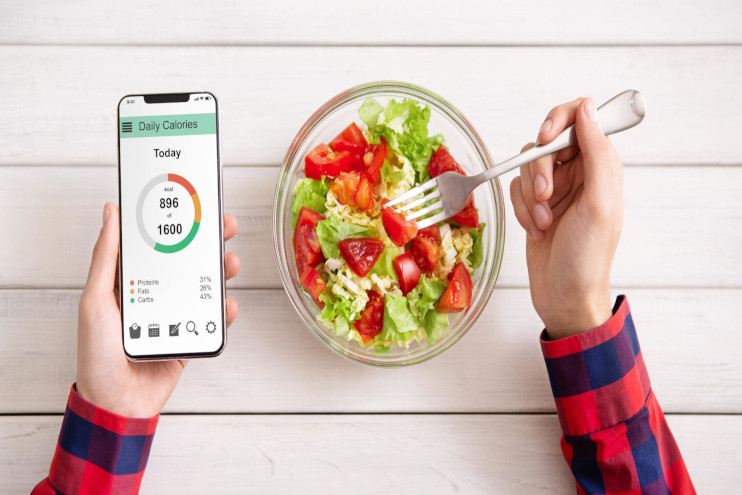It can be hard to lose weight, but knowing how many calories your body requires can help you see the path ahead and make it easier to reach your goals. Knowing how to figure out how many calories you need to lose weight is the most important thing if you want to lose some weight. This complete guide will show you the best ways to count calories, what you need to think about, and useful recommendations to help you reach your goals.
How to Understand Calories and Losing Weight
Food and liquids provide you energy in the form of calories. Your body needs a set number of calories per day to do things like breathe, digest food, and move around. Your body stores extra calories as fat when you eat more than it needs. To lose weight, you need to eat less calories than your body burns. This is called creating a calorie deficit.
But the question is still how many calories you should eat to lose weight in a healthy way. That’s where doing the math right comes in.
Step 1: Find out what your basal metabolic rate (BMR) is.
The number of calories your body needs at rest to keep basic functions going, like breathing, circulation, and cell creation, is called your Basal Metabolic Rate (BMR).
The Mifflin-St Jeor Equation is one of the most used ways to figure out BMR:
For men, BMR = 10 times weight (kg) plus 6.25 times height (cm) minus 5 times age (years) plus 5.
For women, BMR = (10 × weight (kg) + 6.25 × height (cm) – 5 × age (years) – 161)
For example:
If you are a 30-year-old woman who weighs 70 kg and is 165 cm tall, your BMR is 10 times 70 plus 6.25 times 165 minus 5 times 30 minus 161, which is 1451.25 calories per day.
This is how many calories your body burns when you are not doing anything.
Step 2: Take into account your level of physical activity (PAL)
To determine your Total Daily Energy Expenditure (TDEE), which is the total number of calories you burn each day while being active, you need to multiply your BMR by an Activity Factor.
If you don’t do much exercise, your BMR equals BMR × 1.2.
Lightly active (doing light exercise or sports 1–3 days a week): BMR × 1.375
Moderately active is doing moderate exercise or sports 3 to 5 days a week.
Very active (working out or playing sports hard 6–7 days a week): BMR × 1.725
Very active (hard work or exercise every day): BMR × 1.9
Continuing with the example:
Her TDEE is about 2249 calories a day if she works out moderately (3–5 days a week).
Step 3: Make a calorie deficit
You need to eat less calories than your TDEE to lose weight. A daily calorie deficit of 500 to 750 is healthy and helpful for losing weight slowly.
If you want to shed roughly 0.5 kg a week, cut 500 calories from your TDEE.
To lose roughly 1 kg per week, cut down on 750 to 1000 calories, but don’t go below 1200 calories per day for women and 1500 calories per day for men to avoid missing out on important nutrients.
For example:
To lose weight, you need to eat 1749 calories a day, which is 2249 calories (TDEE) minus 500 calories.
Step 4: Keep an eye on your progress
It’s really important to keep track of what you eat after you’ve figured out how many calories you want to eat. You can use apps like MyFitnessPal, Lose It!, or Cronometer to keep track of everything you eat and make sure you stay under your calorie goal.
You should also keep note of your weight, measurements, and how your clothes fit to see how you’re doing over time. Keep in mind that consistency is important, and you may need to make changes based on how your body reacts.
Things That Affect How Many Calories You Need
- Age: As people get older, their metabolism slows down, which means they usually need fewer calories.
- Gender: In general, men have more muscle and a higher BMR than women.
- How the body is made up: More muscle burns more calories, even when you’re not doing anything.
- How active you are: People who are more active burn more calories.
- Health Problems: Some health problems, such thyroid problems, might change how your body burns calories.
Helpful Tips for Losing Weight Successfully
- Focus on foods that are high in nutrients, like fruits, vegetables, lean meats, whole grains, and healthy fats.
- Stay hydrated: Sometimes people think they are hungry when they are actually thirsty.
- Stay away from empty calories by cutting less on sugary drinks, junk food, and processed snacks.
- Strength Training: Building muscle will help you burn more calories while you sleep.
- Get Enough Sleep: Not getting enough sleep might mess with your metabolism and make you want things more.
- Stay on track: It takes time to lose weight, and fast remedies don’t work.
Why it matters to have personalized calculations
A one-size-fits-all approach to losing weight doesn’t work since everyone is different. Personalized calorie calculations let you make a plan that works for your body, lifestyle, and goals that you can stick with.
Also, as AI-powered health applications become more popular, some tools can now figure out how many calories you need, advise meal plans, and change their suggestions based on how well you’re doing.
In conclusion
To figure out how many calories you need to lose weight, you need to know your BMR, take into account how active you are, and make an acceptable calorie deficit. If you keep track of what you eat, stay active, and pay attention to what your body requires, you’ll be on your way to long-term weight reduction success.
It’s not only about eating less; it’s also about making changes to your lifestyle that you can stick with for a long time. If you stay patient and keep doing what you’re doing, you’ll get the outcomes you want!


